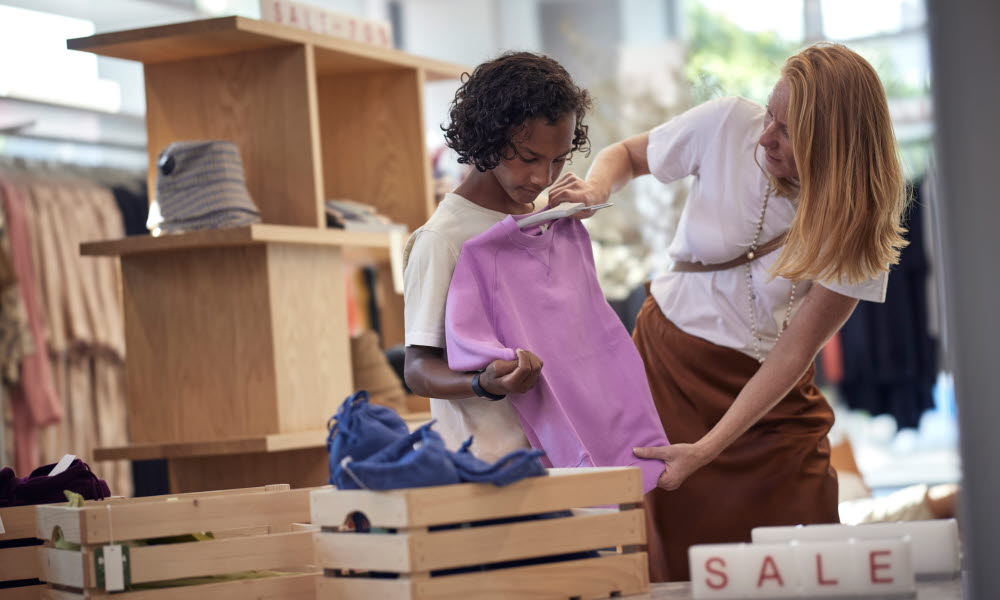
The future of the fashion store: experiential retail!
The fashion industry has taken a toll during the corona crisis. While most fashion retailers have experienced online growth, many has also seen demand fall to unprecedented levels due to the lack of occasions during the pandemic.
Time to consume: 6 min
26 May 2021
As the world is slowly returning to normal one thing stands very clear: consumers are yearning for physical encounters and social interaction, and the need for new fashion items for all these occasions are on the rise! But as consumers have become confident with online shopping, fashion stores need to do more to engage them in physical stores: experiential retail is the answer! In this blog, you will learn why fashion retail must take part in the experience industry and how to create an experiential fashion store that will drive sales in all channels.
Make your comeback with an experiential store
Many consumers (43%) prefer to shop both in physical stores and online , but when visiting the physical fashion store, they want to experience! Customers want to feel, see, try, and seek out advice from staff, but the pandemic has fueled the development of consumers no longer needing to make a trip to the fashion store, as the simple process of buying can easily be done online. Hence, the expectations to the in-store experience has grown immensely during the crisis and fashion retailers need to offer customers personalized and entertaining retail experiences. Here are a few examples of how to make create an experiential fashion store:
-
- Personalized experiences
One way of creating an experiential fashion store is to meet the customers’ individual needs. In order to create highly engaging experiences, relevancy is king – and relevancy for the individual customer is in today’s highly digitized society often created through data. Collecting data on your customers will help staff recognize the customer as soon as they enter the door, and it can be combined with other technology, such as an app, that customers can use throughout the entire store experience.
- Personalized experiences
- Shareables experiences
If your store ends up on Instagram, you know you have been successful in creating an engaging experience. Consumers want to share their best experiences and most cool moments, why Instagram-worthy installations are a great way of not only pleasing the visitors but also a very cost-effective marketing tool to attract new customers.
Best practice: Burberry Open Spaces
In the summer of 2020 Burberry debuted a store in Shenzen with a social focal point. The store is designed for customers to interact with the products and the brand physically as well as on social media. For example, customers can access store tours and product information via the message app WeChat and book e.g. store events or a table in the store’s Thomas’ Cafe. When customers interact with Burberry via WeChat, they are rewarded with a social currency in the form of a virtual animal character that evolves as customers interact with the brand. Customers are also rewarded with new characters, personal content or unique dishes from the Thomas Cafe menu as they interact with the brand, which can also be done by scanning QR codes on the products in the store.
- Sense-activating experiences
Experiential stores activate the customers’ senses. Don’t just have the products sitting in a box, but invite the customers to interact, try, taste, smell, feel, and hear. Engaging their senses will forge stronger emotional connections to the brand as it drives curiosity, discovery and a sense of excitement.
- Immersive experiences
Keeping up with the digital consumer means creating immersive experiences in the physical space. The priority is not the sale, but the level of customer engagement, you are able to create. Driving footfall through the excitement of experiencing something fun or new is the next normal for fashion retail stores. Brands that are great at immersive retail have a focus on curation of brand experience, storytelling, product testing and play.
Best practice: Nike House of Innovation
With a wealth of omnichannel integrations such as pickup cabinets and return service, Nike’s House of Innovation concept is always worth a visit, but in January, Nike transformed their flagship store in Paris into a special House of Innovation with an experience focus that offers a virtual adventure. Here, customers can experience augmented reality-based technology and interact with the products using their smartphone, from which they, among other things, can dive into product stories or evoke virtual animals by scanning QR codes around the store. The store also has a so-called geofence microsite, which functions as a digital basecamp and provides customers with a virtual checklist and an interactive map with a route that they must follow to complete the entire adventure. When customers have completed the adventure and the various tasks, they are rewarded with a physical gift, which they receive from an employee in the store and by a virtual model of the brand’s ”ACG Hiker” mascot on the phone.
- Entertaining experiences
The experiential fashion store is all about taking part in the experience industry that customers have longed for during the pandemic. The physical space is ideal for brand activating events, that really showcases what you are all about and serves as an extension of the brand identity while at the same time offering customers entertainment, socialization, fun, or enlightenment.
- High service experiences
Experiential stores offers customers maximum value for their time by not wasting it. This means exploring how you can offer a high level of service that eliminates time spent on aspects of the visit that doesn’t add value to the experience, e.g. eliminating cues, making it easy to find products, etc. But a high service level also means more time-consuming services as long as they add value to the visit, e.g. being able to co-create or personalize fashion products.
Article written by Laura Simone Andersen, Trend Specialist, Retail Institute Scandinavia





